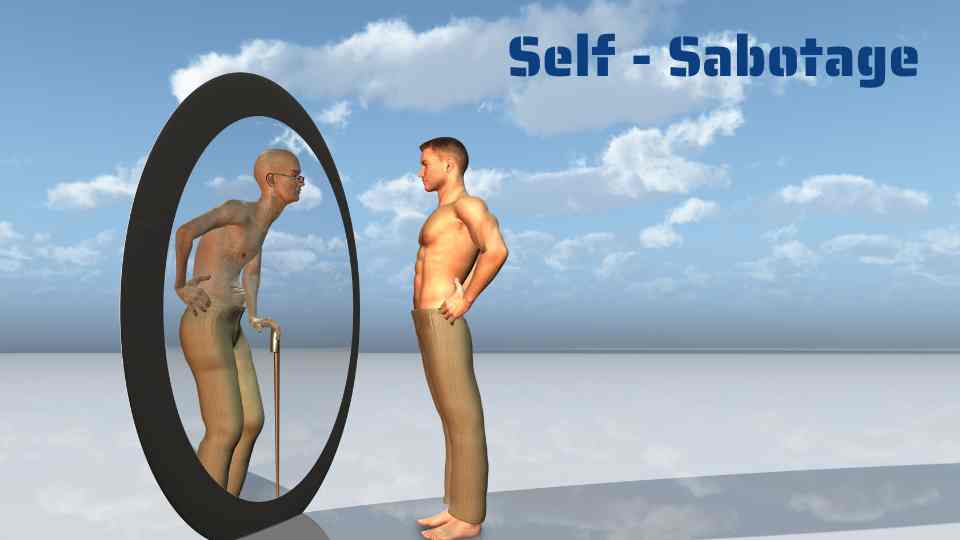Do Emotions Affect Your Body? The Hidden Truth Your Cells Already Know
Written by Dr. Ritu Goyal May 28, 2025
Have you ever cried and felt lighter? Or carried anger in your chest until it turned into tension or pain? Most of us sense that emotions affect our bodies—but science and spirituality now confirm this with stunning clarity.

Yes, emotions affect your body more than you realize. Your thoughts and feelings don’t just float around—they live in your nervous system, your hormones, and even your cells.
As I write this, alongside the deep work of Dr. Joe Dispenza, I feel immense gratitude for the fusion of neuroscience, energy work, and emotional mastery that we both teach.
Let’s explore how your inner world shapes your physical world—and how you can heal your body by healing your emotions.
Why Emotions Affect Your Body

Emotions are not just feelings—they are chemical signals. When you feel joy, your brain releases dopamine and oxytocin, lifting your energy. When you feel fear or anger, your body floods with cortisol and adrenaline, preparing to fight or flee.
But here’s the catch: If you stay in a negative emotional state for too long, these stress chemicals become toxic. They suppress your immune system, disrupt digestion, affect sleep, and create inflammation.
As Dr. Joe often says: “You can’t create a new future while holding onto emotions from the past.”
This is not just theory. It’s biology.
The Science of Emotion and the Body
Research shows that:
-
Chronic stress contributes to autoimmune diseases, high blood pressure, and heart issues.
-
Suppressed sadness or unprocessed grief can show up as chronic fatigue, thyroid issues, or even fibroids in women.
-
Anxiety can tighten the chest, upset the stomach, or trigger IBS.
According to a 2021 study published in Psychosomatic Medicine, long-term negative emotions can rewire your brain’s response to pain and affect your gut microbiome.
Your thoughts create feelings, which release chemicals, which then shape your biology.
Your Body is Listening to Your Emotions
Let me simplify this with a metaphor I often share in workshops:
Imagine your body is a sponge. Every day, it absorbs the “water” of your emotions. If the water is clean—joy, gratitude, peace—it refreshes your system. But if the water is murky—resentment, guilt, anxiety—it begins to weigh you down.
Over time, if you don’t squeeze the sponge, it begins to rot.
That “squeezing” is emotional processing. Crying, journaling, breathwork, meditation—these are ways to cleanse the emotional buildup.
Signs Your Emotions Are Affecting Your Body
Ask yourself:
-
Do I feel tightness in my jaw, shoulders, or gut often?
-
Do I wake up already tired or tense?
-
Do I have recurring physical symptoms that doctors can’t fully explain?
Your body might be asking you to listen to what you’re feeling, not just what you’re doing.
How to Heal: A Simple Emotional Reset
Here is a gentle 4-step practice you can try daily:
-
Pause and Name It – Take 3 deep breaths. Ask, “What am I really feeling?” Name the emotion.
-
Feel It Fully – Sit with it. Let the emotion rise without judging it. Feel it in your body.
-
Reframe It (NLP Tip) – Ask: “What is this emotion trying to protect me from? What gift is hidden in it?”
-
Release and Rewire – Use breathwork, journaling, or Dr. Joe’s meditation to let the energy move and create a new emotional state.
Even five minutes of this can shift your state and signal your body to begin healing.
A Spiritual Note on Emotional Healing
The Bhagavad Gita teaches us to act from a place of balance, not emotional turbulence. When you are emotionally clear, you can see your life from the seat of your soul—not the chaos of your mind.
Every emotion is sacred. It’s a message, not a life sentence.
And as Dr. Joe Dispenza beautifully teaches, when you change your emotional state, you change your energy, and when you change your energy, your reality begins to shift.
FAQs
Q1: Can emotional pain feel like physical pain?
A: Yes. Studies show that emotional pain—like heartbreak or rejection—activates the same brain areas as physical pain.
Q2: Why do I feel emotions in my stomach?
A: The gut is often called the “second brain.” It has over 100 million neurons and responds directly to emotional stress.
Q3: Can emotions cause long-term health problems?
A: Yes. Repressed or chronic emotions like fear, guilt, or anger can lead to inflammation, hormonal imbalance, or autoimmune issues.
Q4: How do emotions affect hormones?
A: Stressful emotions increase cortisol and adrenaline, while joy and love boost oxytocin, serotonin, and dopamine.
Q5: What is the link between emotions and immunity?
A: Positive emotions strengthen immune response. Chronic stress or sadness suppress it, making you more prone to illness.
Q6: Can crying help my body?
A: Absolutely. Crying releases emotional tension, flushes stress hormones, and can calm the nervous system.
Q7: What happens when I suppress emotions?
A: Suppressed emotions stay trapped in the body and may manifest as fatigue, digestive issues, or chronic pain.
Q8: Why do I get sick after emotional stress?
A: Emotional stress weakens immunity, disrupts sleep, and inflames the body—creating the perfect environment for illness.
Q9: How do emotions affect sleep?
A: Worry or grief can keep the nervous system in “fight or flight,” preventing deep, restful sleep and dream healing.
Q10: Is anxiety an emotion or a body symptom?
A: Both. Anxiety is an emotional response that triggers body symptoms like a racing heart, tense muscles, or nausea.
Q11: Can I really heal physical illness through emotional work?
A: Many people do. While medical care is important, releasing emotional pain can support faster, deeper healing.
Q12: Why do I feel tired after emotional release?
A: Emotional release uses energy. It’s like detoxing. Your body needs rest to integrate and repair.
Q13: How do I know which emotion is affecting my body?
A: Tune into body signals. A heavy chest may mean grief. A tight jaw may reflect unspoken anger. The body never lies.
Q14: What’s the best way to release stuck emotions?
A: Breathwork, EFT tapping, somatic movement, expressive journaling, and meditation are all powerful tools.
Q15: Can joy and love heal the body?
A: Yes. Positive emotions generate coherence in the heart and brain—boosting cellular repair and vitality.
Q16: What emotions are stored in the hips or lower back?
A: The hips often hold fear or trauma. The lower back may store financial stress or lack of support. Each body is unique.
Q17: Why do emotions resurface years later?
A: If not processed, emotions are stored in the subconscious. Triggers can bring them up when you’re ready to heal.
Q18: How do childhood emotions affect adult health?
A: Early trauma shapes your nervous system. Many adult health issues stem from unhealed childhood emotional wounds.
Q19: Can spiritual practices really help emotional healing?
A: Yes. Practices like mindfulness, prayer, chakra balancing, and mantra chanting align your inner and outer world.
Q20: Do men and women store emotions differently?
A: Energetically, yes. Women tend to store in the reproductive organs and heart. Men often suppress into the back or gut.
Q21: How long does emotional healing take?
A: It varies. Small shifts can happen in minutes. Deeper healing is a journey. Be patient, not perfect.
Q22: Is it selfish to prioritize my emotions?
A: No. Tending to your emotions is essential self-care. You can’t pour from an empty cup.
Q23: Can music or art help with emotional release?
A: Definitely. Creative expression accesses parts of the brain that language can’t. It helps release emotion safely.
Q24: What’s the connection between energy and emotion?
A: Emotion = energy in motion. When blocked, energy stagnates. When expressed, it flows and heals.
Q25: Can emotions really cause physical disease?
A: Yes. While not the only cause, emotions often play a significant role in chronic pain, hormonal imbalance, heart disease, and even cancer.
Q26: What’s the fastest way to feel better emotionally?
A: Breathe deeply, move your body, and become aware of your emotional pattern. Awareness is the first step to change.
Q27: What if I don’t know what I’m feeling?
A: That’s okay. Start with body sensations. Tension, pressure, tightness—these are clues. Follow them inward.
Reflection Prompts
-
What emotion do I most avoid—and what has it cost me physically?
-
When was the last time I let myself fully feel and then release an emotion?
-
What does my body want me to feel today?
🌟 Ready to Heal Your Body Through Emotional Awareness?
If this blog touched something deep within you…
If your body has been whispering—or shouting—for you to finally listen…
If you’re ready to stop just “managing symptoms” and start transforming from within…
✨ Then I warmly invite you to join my upcoming live Masterclass:
“Emotions in the Body: Heal from the Inside Out”
In this powerful 90-minute session, you’ll learn:
✅ Why your emotions silently shape your health, relationships, and success
✅ How hidden energy blocks keep repeating life problems again and again
✅ A simple method to activate your inner healing power and shift your frequency
This is not just theory — it’s a journey of real transformation.
✨ You’ll walk away feeling empowered, clear, and connected to your true self.
This masterclass is for you if you’ve ever said:
“I know my body is carrying emotional pain, but I don’t know how to release it.”
“I’m tired of feeling stuck in the same emotional patterns.”
“I want to learn how to heal myself—deeply, naturally, and spiritually.”
🌺 You are not alone. Your body can heal. And it starts with understanding your emotions.
🎟 Reserve your spot now and step into the next version of YOU.
👉 Click here to join the whatsapp group for Masterclass
Seats are limited—let your healing begin today.
With warmth and devotion,
Dr. Ritu Goyal
Gynaecologist | Life Coach | Chakra Healer
In Closing: Your Emotions Are a Portal to Healing
You are not broken. You are emotionally carrying what you were never taught how to release.
But now you know: Your body is your compass. It tells the truth even when your mind is confused.
So listen, gently.
Honor what you feel. Choose how you heal.
And remember, emotional healing is not about fixing yourself. It’s about coming home to yourself.
With love and light,
Dr. Ritu Goyal
Explore More from DrRituGoyal.com Understanding Emotional Frequency
Understanding Self-Sabotage: What It Is and How to Overcome It?
The Solar Plexus Chakra: Your Key to Confidence and Overcoming Self-Doubt.














